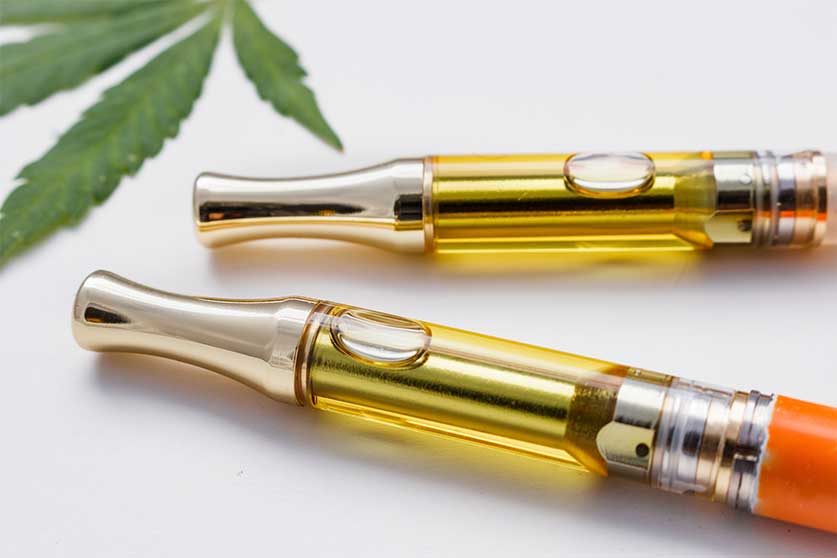What Does Marijuana Look Like?

Medically Reviewed By: Manish Mishra, MBBS
Each form of marijuana has a different appearance. There is the cannabis plant with its signature green leaves, the flower that looks like dried-up clumps or buds, the ground marijuana that can be rolled in joints and blunts, and the concentrated forms of marijuana that look like yellowish or amber-colored butter or honey.

Marijuana is a mind-altering psychoactive drug and plant. The main active ingredient of the drug is the cannabinoid THC (9-tetrahydrocannabinol) which is what leads to the psychoactive effects.
Marijuana comes in many different forms depending on how it is processed and what parts of the actual plant are used. How it’s processed and what plant parts are used also changes what it looks like.
What Do The Forms Of Marijuana Look Like?
Marijuana can look very different depending on the form it’s in. There are the plants and buds and then there are the many marijuana products.
Marijuana Plant
The marijuana or cannabis plant is probably the most well-known version of the drug. When people think of marijuana, they often think of the leaf shape.
The leaves are green, have a serrated edge, and have anywhere from 3-13 leaves depending on the strain. The two most popular strains include the Indica plant and the Sativa plant.

Marijuana Flower
Marijuana buds are the flower part of the plant. The buds can vary in size and shape depending on the strain of cannabis but they’re likely a brownish green color.
Each flower or bud looks like dried-up clumps with fine hairs poking out of them. These hairs or trichomes are the glands of the plant where cannabinoids like THC and cannabidiol (CBD) are stored along with the terpenes.

Ground Marijuana
Ground marijuana consists of the dried and cured flowers that have been ground up into a fine, greenish brown powder. This type of marijuana is kept in containers for storage and can be ground up by using a grinder so it’s ready to be smoked.
Ground marijuana use involves putting the substance in pipes, bongs, joints, and blunts, or it can be added to food to make edible marijuana products like brownies or gummies.

Marijuana Concentrates
Dabs are a form of marijuana concentrate with a high level of THC. Since THC is the psychoactive component of cannabis, dabs are very potent and cause intense side effects that can increase the risk of serious health effects when used.
Dabs or concentrates are likely yellow or amber in color.
When this type of marijuana is made, chemicals are used to extract the THC, CBD, and terpenes from the plant. This ensures there’s no plant material found in the concentrate.
Some examples of concentrated marijuana include:
- honey oil/honeycomb: dark yellow or amber liquid with a very thick consistency
- shatter: thin amber sheets that look like glass and can easily be broken when at room temperature
- butter: a yellow/amber substance with a doughy consistency
- wax: coarse and crumbly material that looks like earwax
These concentrated forms are likely used with a vaping pen, dab rig, or dab pen. The pen or rig heats the concentrate so that it can be smoked and inhaled.

Street Names For Marijuana
Marijuana has quite a few street names or nicknames it goes by, including:
- ganja
- skunk
- dope
- hash
- mary jane
- pot
- reefer
- sinsemilla
Marijuana Addiction
Marijuana addiction can be very difficult to detect because the physical indications you might expect are not always there. There is also less stigma when it comes to marijuana because of its legalization in many states. However, addiction is still possible.
Signs of marijuana addiction can include:
- relationships suffering due to marijuana use
- developing withdrawal symptoms when not using
- needing more of the drug to feel the same effects
- not being able to stop cannabis use after multiple attempts
- continuing to use the drug despite negative consequences
If you or a loved one are struggling with marijuana abuse and looking for treatment, contact Ohio Recovery Center to learn how we can help.
- Drug Enforcement Administration https://www.dea.gov/sites/default/files/2020-06/Marijuana-Cannabis-2020_0.pdf
- National Center For Complementary and Integrative Health https://www.nccih.nih.gov/health/cannabis-marijuana-and-cannabinoids-what-you-need-to-know
- National Institute on Drug Abuse https://nida.nih.gov/publications/drugfacts/cannabis-marijuana
- Substance Abuse and Mental Health Services Administration (SAMHSA) https://www.samhsa.gov/marijuana

